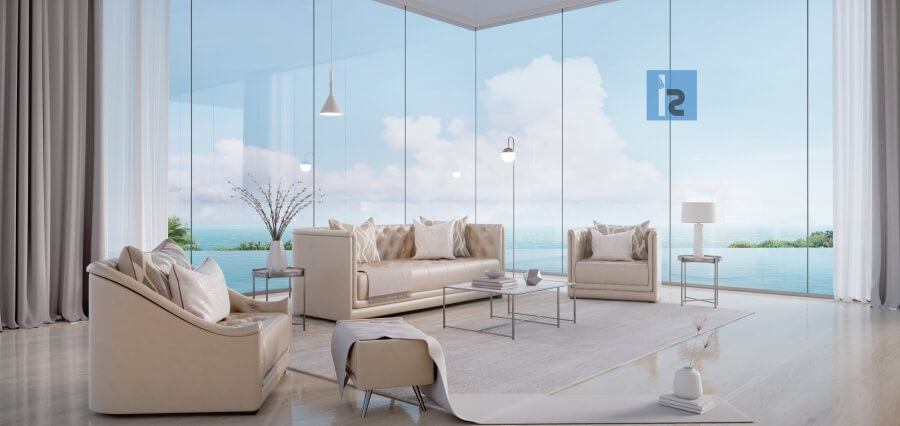Glass is a peculiar product. It provides almost infinite ability to convert space both functionally and aesthetically. And with the recent technical development, it has further expanded possibilities. Although glazing can often be thought of as a solely functional feature of architecture and building, it often plays an important role in interior design.
Understanding the advantages provided to designers by glass requires at least a clear understanding of the essence of the glazing in the structural architecture. The best artists work on architectural glass projects and know how to find a balance between their ideas and the glazing at their fingertips.
Inside Out
Although interior design is based on the internal atmosphere of a room or building, this does not mean that designers should feel confined to aesthetics that are merely manmade, modern, or architectural. One of the great advantages of glass in interior design is that it provides an opportunity to welcome the outside world.
Inviting the outside does not inherently provide any comprehensive perspective, but to look at it in a different way, the glass features allow the interior designs to draw on the outside world as a visual stimulus. The designers, in effect, have a sense of movement, providing a seamless connection between the interior and the exterior.
By providing a view of anything like a pool, a hillside, or another natural item in an outdoor environment, glass elements may enhance designs that draw from nature by providing a realistic view of their inspirations. The same idea also applies to urban environments; views of anything from skyscrapers to townhouses can be used to galvanize new interior aesthetics.
Plenty of Natural Light
For lighting in general being an important part of interior design, the use of natural light is one of the main advantages that glass elements bring to the table.
Through filling an interior room with sunshine, glazing will turn a room from one that only looks amazing to one that makes us feel amazing. Especially when it comes to central and functional rooms and spaces such as kitchens, dining areas or bathrooms, spaces that are used often and regularly during the day.
In fact, one of the most important of these is the impact that daylight has on color perception. For a style that aims to capture ‘real color,’ natural light is also used as the primary source of lighting.
Eliminate Practical Restrictions
Modern glass features such as sliding doors and even roof and floor panels can be used as access points when designing a room that requires either internal or external access, as well as providing the above-mentioned benefits of natural light. It ensures that designers do not have to choose between an uninhibited light source and an entry point designed solely to aesthetics.
Ventilation and insulation are another field in which the design of glass will greatly benefit. After all, the best designers not only understand aesthetics, but also the functional and immersive elements of interior space. Anything as simple as fresh air flowing into space through a window or opening a glass roof may add transformative quality, making spaces feel as airy and inviting as they appear.
Another form in which glass can help interior design concerns privacy. Although this might sound a little backward, glass and privacy are not necessarily synonymous. However, cutting edge glazing choices can now turn glass panels between transparent and opaque by pressing a button. Switchable glass is becoming an increasingly common aspect of interior design, with anything from shower walls to glass cabinets capable of integrating technology.
Quality of Lifetime
Minimum glazing can deliver an aesthetic of a special, timeless nature. Facilities such as glass links and other items involving frameless glazing are often combined with historic or listed buildings since, they have a fully discreet effect.
In this way, glass is perhaps one of the most functional materials for dealing with buildings that are either architecturally historic or unnecessarily conventional. Modern glazing installations will breathe new life into an interior space, and the most subtle and delicate solutions do not deteriorate with time.
More than Just Structural Features
Although glass can only be associated with structural features such as windows and doors, this is not the whole picture. As a product, glass can be used effectively in any design configuration, whether it is a small glass sink or a large glass table. Frequently used in modern and minimal designs, glass features such as these can greatly improve the modern feel of space.
In Transparent View
There is a lot to be said about glazing in interior design, but the advantages are clear. Although it provides an array of visual and functional advantages, its greatest advantage is the manner in which it puts all the power of the world back in the hands of the user. Whether by filling a room with natural light or simply providing an outdoor entry point, glass features can be used to wipe the slate clean and reclaim the space as a welcoming blank canvas.


